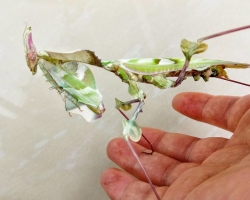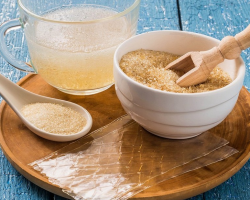An effective fight against the Colorado beetle on potato beds is possible both with the use of chemical poisoning agents and with non -toxic natural substances.
Content
- Where did the Colorado beetle come from in Russia?
- What does the Colorado beetle look like, what is afraid, what kind of damage to the larva does?
- Stages of development of the Colorado beetle with complete transformation: photo
- Natural enemies and repels of the Colorado beetle: plants, flowers, birds
- Do the Cescarks of Colorado beetles eat?
- Planting potatoes and fighting with Colorado beetle drugs
- The prestige means from the Colorado beetle - instructions for use
- How to get rid of the Colorado beetle with folk remedies?
- Video: Colorado beetle, 8 ways to remove without chemistry
- Mustard with vinegar from the Colorado beetle: recipe
- Video: Environmentally friendly remedy for combating the Colorado beetle
- An effective tool for processing potatoes and eggplant from the Colorado beetle
- Video: fight against the Colorado beetle. Aktara
The Colorado beetle causes a lot of trouble to gardeners. To protect the potato harvest from this gluttonous pest, you have to use a variety of struggle methods, including chemicals and folk remedies.
However, it is not possible to completely destroy the Colorado beetles because of their endurance and survivability. It remains only to restrain the increase in the number of these insects in order to maximize the threat of damage to the crop of the Paslenovs.

Where did the Colorado beetle come from in Russia?
The Colorado beetle received the name and began its procession through potato fields in 1859. It was then that in the American state of Colorado, the bugs, the Mexico spreading from the north, devastated huge plantations of the nightshaft. At the same time, their number has increased many times, and the US distribution speed increased several times.
The speed of the Colorado beetle in America in the 18th century was 200 km per year.
In 1876, on imported potatoes, the Colorado beetle hit Europe. For more than 70 years, these library beetles have caused serious damage to the agriculture of European countries, and after the end of World War II, they reached the borders of the former USSR.
In 1949, beetles attacked the potato fields of Ukraine, and from there in 1953 they reached Belarus and Russia. Zhuki came to the Urals from the Ukrainian SSR in wagons with hay in 1975, and in 2000 appeared in the Primorsky Territory.

The widespread spread of the Colorado beetles is facilitated by the extraordinary survivability of these insects. They do not drown in the seas and rivers, successfully traveling through the water, move on all types of transport for long distances, fly in the wind. In the absence of food, the Colorado beetles fall into the ranges, falling asleep for a period of several days to three years, and when the danger approaches, they pretend to be dead.
What does the Colorado beetle look like, what is afraid, what kind of damage to the larva does?
The size of the Colorado beetle is about 1 - 1.2 cm in length and 0.6 - 0.8 cm in width. The soft orange body and the delicate wings of the insect are hidden under tough striped overwings.

On the light overlap of the Colorado beetle, ten dark stripes (five each) are clearly loomed. Hence the first name of the pest - “Decembramlineata”, which means “tennete”.
In flight, Colorado beetles are able to develop a speed of about 8 km/h. During the season, the beetle can make a path of tens of kilometers.
Colorado beetles actively multiply. On the lower part of the leaves of the nightshafts, females lay orange oblong eggs, of which soft -bodied larvae appear after 1 - 2.5 weeks.
Before turning into beetles, larvae passes 4 stages of growth. The older they become, the more damage they are caused by the peaslens to the bushes: they immediately gnaw only the pulp of the lower part of the leaves, gradually switch to the upper part and tops of the shoots.
Before burying into the ground for pupation, adult larvae creep over neighboring, not damaged to the bushes.
Important: during the season, one female of the Colorado beetle can lay off from 300 to 1000 eggs. Fertility depends on the weather and climate.
The Colorado beetle and its larvae quickly produce immunity to most of the poisons used. Only the use of systemic insecticides in the struggle gives good results. If the size of the site is small in order to quickly get rid of the Colorado beetle, it is best to collect manually and destroy adult individuals, their eggs and larvae.

Colorado beetles have few natural enemies, since in their Taurus they accumulate toxic substances.
The smell of rotting onions can scare away the Colorado beetle. Loof cleaning, buried along with potatoes, will help maintain young shoots from the attack of these pests.
Stages of development of the Colorado beetle with complete transformation: photo
In the spring, when the potato beetles ready to reproduce begin to get out of the ground, their first mating occur. Typically, beetles with the greatest willingness to mate come out of the ground when it warms up to 12 - 15 ° C.
The result of the mass awakening of the Colorado beetles are numerous egg cloth left by females. The egg is the first stage of insect development.

The second stage - larvae. They devour the thin shells of eggs, from which they hatched themselves, as well as those who did not have time to break the eggs. For several days, the larvae gain strength, parasitizing only on the bottom of the leaves, then move to the upper parts. To get stronger, larvae need to eat intensely, which they do, leaving only gnawed stems and veins from potato bushes.

Grown larvae, ready to pupate, burrow into the ground. There, at a depth of 10 - 15 cm, they turn into dolls, That is the third stage of development. In this form, they spend 10 - 20 days.
The dolls of the Colorado beetle do not harm the crop. They “close” and inactive all the time while they are underground.
The fourth stage of development - adult beetleswho, with their appearance from the Earth, declare their readiness to reproduce offspring and repeat the cycle.

Natural enemies and repels of the Colorado beetle: plants, flowers, birds
In Russia, there are few natural enemies of the Colorado beetle. Only a few types of insects can help gardeners in the fight against potato pests:
- ladybug - eats eggs and recently hatched larvae, but does not harm adult beetles
- golden -eyed - Fits egg masonry and small larvae of the Colorado beetle
- flies-sirfids - Destroy eggs
Also, Colorado beetles eat cescrings, turkeys and pheasants. However, in order to accustom these birds, it hunts striped pests, it is necessary to regularly mix the eggs and larvae of the Colorado beetles, as well as dead adults into food.

Planted around the perimeter of the site with potatoes calendula, night violet, tagli or legumes The beetles will be scared away with their smell. Also, striped robbers will refuse potatoes treated with a decoction of celandine.
Important: multiple attempts by domestic biologists to bring from Mexico and resettle the natural pests of the Colorado beetle by the Russian fields were unsuccessful. Unlike their striped countryman-pest, thermophilic insects die upon the occurrence of the first frosts.

Do the Cescarks of Colorado beetles eat?
The cesarians successfully eat Colorado beetles right in the garden when they get used to this "delicacy". Protein and proteins contained in beetles and their larvae are necessary for guests and must be present in their daily diet.
First of all, birds will be selected and destroyed by all eggs laid down by Colorado beetles on the back of the leaves of nightshade crops. This will lead to a significant decrease in the number of pests. Then they will gradually destroy the growing larvae and adult beetles.
Important: for a successful struggle with the Colorado beetle on a plot of 10 - 15 acres, it is enough to release 3 to 4 cesarcar into the garden daily.

Planting potatoes and fighting with Colorado beetle drugs
Chemical preparations of potato tubers before planting, as well as spraying seedlings, extremely adversely affects not only the state of beetles, but also on human health. The fight against the Colorado beetle is carried out only when it is impossible to destroy pests in another way. Such funds can be used:
- “Iskra”, “Vesta”, “Taran”, “CyTKor”, “Maurita”, “Arrivo” - Pyrethroide with insufficient efficiency.
- "Bankol" - Highly effective non -interoxin, safe for humans and other warm -blooded poison, obtained from seaworms. Acts on the central nervous system of insects, blocking the main reflexes. Beetles cease to eat, multiply, move and die shortly after poisoning.
- "Regent" - Phoenilpirazole, new generation of long -acting insecticide. The first poisoned beetles die in a few hours, and after a week, potato beds are completely cleaned of parasites.
- "Commander" - Clornicotilia, effective both when introducing potatoes into the soil, and when spraying greens. Acts on leaf -eating pests at any stage of their development. 1 - 2 processing per season is enough to completely protect the potato harvest.
- "Confidor", "Mospilan", "Aktara" - Neonicotinoids of quick action with a long period of active insect damage. During the season you will need 2 - 3 processing.
Important: the Colorado beetle quickly gets used to the poisons, so the repeated use of drugs of the same action is ineffective.

The prestige means from the Colorado beetle - instructions for use
Inexpensive, convenient drug "Prestige" It provides a long result and protection of potatoes not only from malicious insects, but also from pathogens. This remedy is a suspension consisting of imidaclopride and pencusone.
Important: “prestige” is attributed to moderately dangerous poisons (grade 3). After 50 days from the moment of use, the drug loses its protective properties and decomposes, without forming toxic compounds.
Use “prestige” must be strictly observing the instructions:
- Dilute the drug with water from a ratio of 1:10 (10 g of poison and 100 g of water are required per 1 bucket of planting potatoes).
- Carefully process the potatoes, having previously poured out onto the oilcloth, and leave to dry.
- Potatoes are planted no earlier than 2 hours after processing.

How to get rid of the Colorado beetle with folk remedies?
The folk methods of combating the Colorado beetle, although they take a lot of time and effort, are absolutely harmless to human health. The most popular among gardeners are:
- Mechanical pulling from the bush with a broom. After the beetles fall, they are collected and immersed in kerosene or hydrochloric solution.
- Near the potato bed, large heaps of fresh potato cleanings are poured. Colorado beetles quickly gather for these heaps. When there are a lot of malicious insects in the trap, a bunch is simply set fire to, after dousing it with kerosene.
- When the first potato seedlings appear from the ground, new tubers - baits - are not far away. Beetles prefer fresh young shoots, so they will quickly creep from older bushes to young.
- Regular thorough spraying of potatoes of potatoes by infusions of garlic, onion, celandine, wormwood. The effectiveness of this type of processing depends on the weather - in the sun the effects of infusions weakens, and the rain completely neutralizes their effect. In order to scare off the pests from the bed, spraying should be carried out at least 1 time per week.
- Wooded with wood begins during planting, when it is poured into every hole with potatoes with potato tubers. In the future, spraying the bushes with concentrated infusion of ash is carried out.
Important: the more folk methods of combating the Colorado beetle are used simultaneously, the better the result will be.

Video: Colorado beetle, 8 ways to remove without chemistry
Mustard with vinegar from the Colorado beetle: recipe
One of the most popular and effective folk remedies, who repel from the Colorado beetle and his larvae the desire to enjoy the leaves of potatoes, is a mustard and used solution. There are several options for its preparation:
Recipe No. 1
Ingredients:
- Mustard powder (2 - 3 tbsp)
- Water (1 l + 1 brow)
- Vinegar (100 ml)
Preparation:
- Place mustard in a deep container
- Pour water (1l)
- Leave for 48 hours
- Dilute with water (1 bucket)
- Add vinegar
- Mix
- Use to spray bushes
Video: Environmentally friendly remedy for combating the Colorado beetle
Recipe No. 2
Ingredients:
- Water (1 bucket)
- Vinegar (100 ml)
- Mustard powder (3 tbsp)
- Skipidar (50 ml)
- Infusion of onion husk (300 ml)
- Infusion of wormwood (300 ml)
- Garlic infusion (300 ml)
Preparation:
- Place all the ingredients in a deep garden container
- Pour water
- Mix
- Use in the evening to spray potatoes bushes

Recipe No. 3
Ingredients:
- Mustard powder (6 tbsp)
- Laundry soap (50 g)
- Vinegar (100 ml)
- Water (1l + 1 bucket)
Preparation:
- Pour mustard powder with water (1l)
- Leave for 2 days
- Dilute with the rest of the water (1 bucket)
- Add grated laundry soap
- Add vinegar
- Mix thoroughly
- Use to spray potatoes bushes
Important: immunity is not produced for a mixture of mustard and vinegar in Colorado beetles, so this tool can be used repeatedly on the same site.

Rules for the preparation and use of mustard-solution solutions for an effective struggle with the Colorado beetle:
- Spray the bushes as thoroughly as possible, do not be afraid to “overdo it”. Abundant processing is guaranteed to decay beetles from potatoes.
- Spend the processing of the beds into calm, non -fire evenings.
- Do not allow the flow of solutions with the addition of vinegar, make sure that its main part remains on the leaves.
- If a mustard solution is used for processing without adding vinegar, you can also use it for irrigation.
- Do not use the solution later than 2 hours from the date of cooking.
- Do not use the solution in the heat - in the sun, it will instantly lose properties.
- Stop spraying 20 days before harvesting.
An effective tool for processing potatoes and eggplant from the Colorado beetle
In order for the time spent to fight the Colorado beetle, the means and efforts are not in vain, you need to carefully approach the choice of processing method.

It makes no sense to call any specific type of poisons or the method. Colorado beetles get used to all chemicals that are used repeatedly on the same site and, developing immunity, continue to live and multiply on the bushes treated with poisons.
Therefore, it becomes obvious that drugs for processing the beds will have to be changed from time to time.
Only the Colorado beetles do not get used to folk remedies. The smells of onions and garlic are always scared of them, the intolerance of the taste of mustard and vinegar remains also constant.
To maintain the potato harvest unharmed, completely exterminating on the section of the Colorado beetle, its larvae and eggs, each gardener can do. To do this, it is enough to correctly choose a chemical drug for processing bushes and use it in combination with folk methods of struggle.








How to get rid of the Colorado beetle forever.
In Latin America, in the homeland of potatoes, there is another plant that is very interesting for us. It is called “fragrant tobacco” (or “fragrant tobacco”, depending on how the seller calls it). Two of its properties are interesting to us: firstly, this is the most attractive food for the Colorado beetle, to which it goes even from potatoes and, secondly, a fragrant tobacco for the Colorado beetle is mortally poisonous. As a result, we have an ideal bait: we plant a fragrant tobacco not far from potato plantings, and then the beetle itself goes to it, eats and die. The problem is that if you sow fragrant tobacco directly into the ground, then by the time of the appearance of the beetle it is just glued and completely eaten by the first beetles, the rest is not enough. In the homeland of fragrant tobacco there is no such problem, since there it grows like a perennial, and in our northern parts it freezes every winter, so new plantings are required every year. It complicates the work that our lands are infected with a beetle, in my opinion, simply fantastically - in some letters they report that Zhukov is pressed when digging the earth for planting potatoes. In such conditions, complete cleaning of the site from the Colorado beetle will take about three years. Consider the most difficult option with a large number of wintering beetles:
1. 2 months before planting potatoes, we sow fragrant tobacco for seedlings. For a plot of 8x8 meters, we had enough cut along a liter package of milk.
It is necessary to sow in advance because two-week seedlings have 2 cotyledon leaves with a diameter of about 1 millimeter (per tooth for one beetle), and seven-industry ones are already 4 real sheets, the largest of which is about 10 centimeters. We sow fragrant tobacco on March 1-3 and in early May, when we plant potatoes, they grow to 15-20 centimeters (this is enough for all the surrounding beetles).
2. Simultaneously with the planting of potatoes, we plant the seedlings of fragrant tobacco along the perimeter of potato plantings and directly into the potato rows with a step of 1-1.5 meters.
On potatoes, we planted fragrant tobacco for the first 2 or 3 years, since the number of the beetle wintering in the ground was unknown, but I wanted to provide all the poisonous bait of everyone (so that they would be not far from walking, otherwise you would see the eggs on potatoes without reaching it). Now we are planting it only on two sides of the potato planting, and we plant the rest with a separate flower bed. According to the observations, the area of \u200b\u200bfragrant tobacco is more than 20 meters, but so far it is scary to plant it with such a step, I don’t want any accidents.
3. That's all the work with him. Fragrant tobacco plant is unpretentious, hilling along with potatoes tolerates without problems, although it interferes a little. Naturally, my recommendations are not the truth in the last instance and some adjustments may be needed depending on local conditions, but the main thing will remain: fragrant tobacco is the best poisonous bait for the Colorado beetle.
A few words about fragrant tobacco. The plant is perennial (according to Wikipedia, but perhaps the author of the article does not know the difference between perennial and evergreen, like pepper), in the conditions of the Moscow Region can reach a height of more than a meter (as at home, I do not know). After sunset, the flowers have a strong pleasant smell. My flowering is associated with all the well -known lupine: it begins to bloom from below and, as it grows, flowering rises up the stem. His seeds are much smaller than poppy seeds, similar to dust. Ripe boxes with seeds can be torn and put on a sheet of paper. If the seeds are wet in them in the rain, they can simply dry them. Now we are sowing our seeds. In the fall, we cut the stems, put on the newspaper, after a while we shake them and collect the seeds from the newspaper no less than a hundred bags. This year, the company "Gavrish" launched fragrant tobacco seeds "Blaging White Harbor." I took a bag for a sample, so the number of seeds in it turned out to be not ordinary 0.1 grams, but 5 pieces. I will try to grow them in a pot at home. If they grow up, by spring they will give seeds no less than a gram. If you have only such on sale, try to propagate the seeds at home.
That's perhaps so far.
Sincerely, Bozhenov Yuri Petrovich, Moscow.
A very interesting article, but if you want to completely save the site from the Colorado beetle, read here: https://ok.ru/nepriches/topic/153399756205488. This is the author's text.